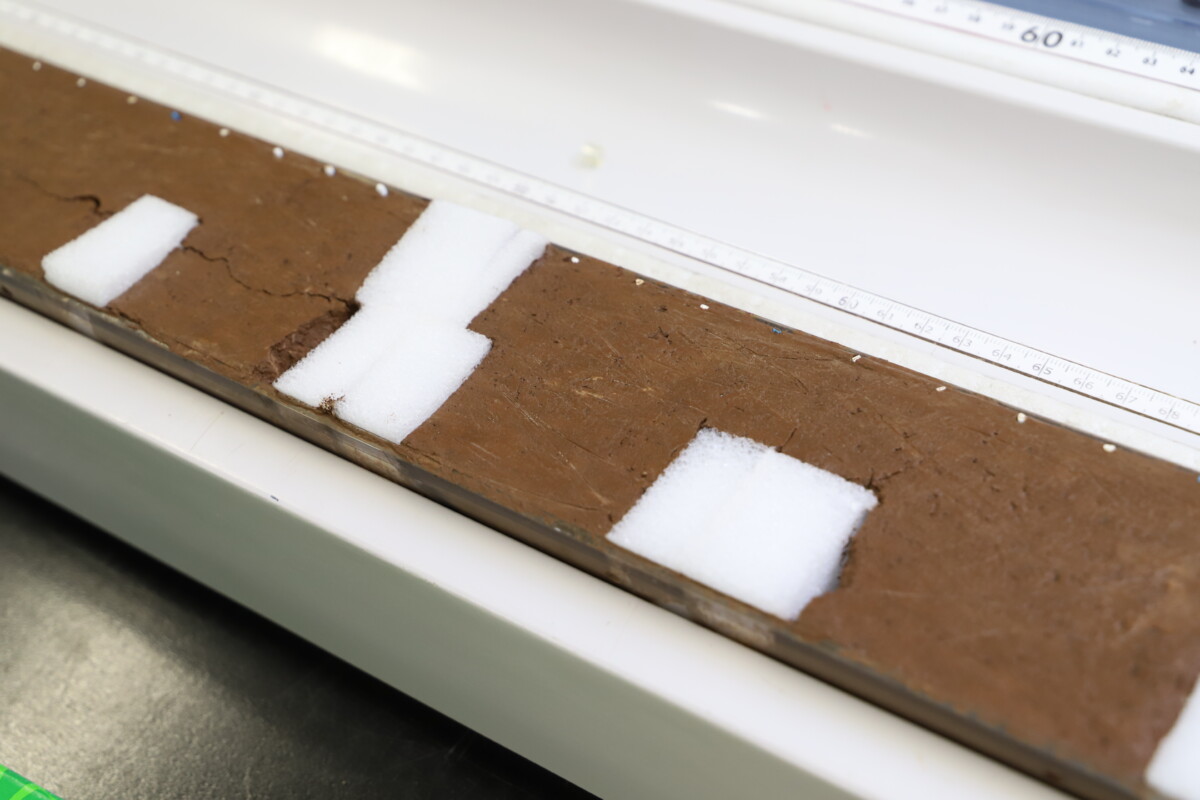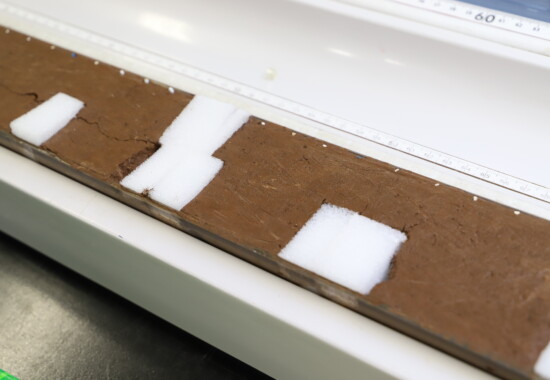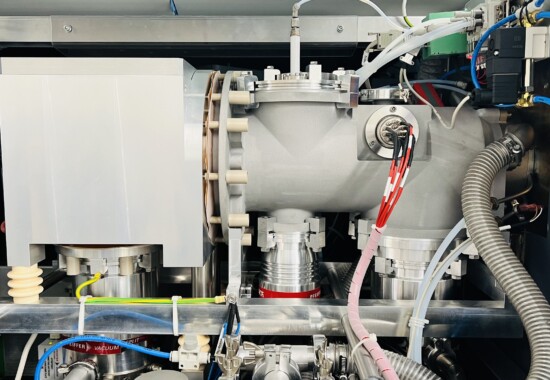レアアース泥発見論文part 2 Paper reporting discovery of REY-rich mud part 2
前回紹介した、レアアース泥が太平洋に大量に存在することを初めて報告した論文「Deep-sea mud in the Pacific Ocean as a potential resource for rare-earth elements https://rdcu.be/cOq0J」について、これがいかに革新的であったかについて、少し掘り下げて紹介します。I introduce the article reporting the discovery of REY-rich mud in the entire Pacific Ocean “Deep-sea mud in the Pacific Ocean as a potential resource for rare-earth elements https://rdcu.be/cOq0J” and explain how it was innovative.
今回は、なぜこの論文がレアアース泥の存在を最初に報告することになったのかについて、今までレアアース泥が存在することが認識されてこなかった理由を説明したいと思います。This time, I explain why this paper was the first report of the existence of REY-rich mud, and why the existence of REY-rich mud has not been recognized until now.
その説明するには、まず「海底堆積物とは何か」について説明しなければなりません。海底にはさまざまな種類の泥(堆積物)が積もっています。それらは主要な構成成分によっていくつかの種類に分けられ、生物源堆積物、熱水性堆積物、遠洋性粘土、などがあります。To explain this, I have to explain “what is deep-sea sediments?”. There are vriety of deep-sea sediments accumulating on the seafloor. They are classified into several types of sediments based on their major mineral composition: biogenic sediments, hydrothermal sediments, pelagic brown clay, etc.
このうち、遠洋性粘土は存在割合が最も高く、海底のおよそ4割の面積を覆っています [1]。この遠洋性粘土は、陸地からはるか遠く離れた、生物のいない、大陸からの塵も届かない遠洋域で、非常にゆっくりと堆積します。その速さは、1000年で厚さ数ミリメートルほどです。Among them, pelagic brown clay accounts for the largest area of seafloor around the world, which is approximately 40%. Pelagic brown clay slowly accumulates in the pelagic realm, far from land, where there are almost no living organisms and no dust from the continent can reach. The accumulation rate is about a few millimeters thick in 1,000 years.
レアアース泥は、堆積物種でいうと、この遠洋性粘土に含まれます。言い換えれば、遠洋性粘土のうち、レアアース濃度の高いもの(400 ppm 以上と定義されています)がレアアース泥とも言えます。REY-rich mud is classified as pelagic brown clay. In other words, those with high concentrations of rare earthelements (defined as 400 ppm or more) can be considered REY-rich mud.
そして実は、遠洋性粘土はもともとレアアース濃度が比較的高く、400 ppm を超えることは非常に多いのです [2,3,4]。なぜなら、レアアース泥などの遠洋性粘土は、非常にゆっくりと堆積するため、海水中に溶けているレアアースなどの有用金属がゆっくりと濃縮されるように堆積するからです。つまり、海底の4割もの広大な領域に、膨大な量のレアアースが眠っていることになるのです。In fact, pelagic clay tends to have relatively high concentrations of rare earth elements, often exceeding 400 ppm. This is because pelagic clay such as REY-rich mud accumulates very slowly, which allows useful metals such as rare earth elements dissolved in seawater to concentrate. In other words, an enormous amount of rare earth elements lie in a vast area as large as 40% of the seafloor.
それなのになぜ、今までこれを資源にしようというアイデアが生まれなかったのか。私はその理由として以下の三つがあると考えています。Why, then, has the idea of using this as a resource not been developed until now? I believe there are three reasons.
- 遠洋性粘土の学術的価値が低いとみられていたこと Pelagic clay has been considered to have little value for academic research
- 見た目が特に何の特徴もないただの泥であること Pelagic clay looks like just mud with no particular features in appearance
- 工学的・社会的視点をもった研究者が関わってこなかったこと Researchers with engineering and social perspectives have not took part in
まず1について、海底堆積物を研究に使うとき、「年代がわかること」「情報が多く得られること」の二点が有用となるための条件です。遠洋性粘土は年代を決めるのも困難で、微化石などの有用な情報をもたらすものもほとんど含んでいないため、今までほとんど興味を持たれていませんでした。したがって、お金と時間をかけて遠洋性粘土を採取して研究しようというモチベーションは生まれず、ましてや太平洋全体を網羅的に研究しようなどという人はいませんでした。Regarding the first, when using marine sediments for research, two conditions must be met for them to be useful: they can be dated and they can provide a lot of information. Since pelagic clay has been difficult to date and lacks microfossils or other materials that can provide useful information, there has been little interest in them. Therefore, no one was motivated to spend money and time to collect and study pelagic clay, much less to make a comprehensive study of the entire Pacific Ocean.
次に2について、レアアース泥の見た目は本当にそのへんにあるただの泥です。マンガンノジュールや海底熱水性鉱床は、見た目が黒い金属の塊であるため、いかにも資源らしい見た目です。それに比べてレアアース泥などの遠洋性粘土は、縞模様や金属らしい色もほとんどない均質な泥です。こういった特徴の乏しさが、遠洋性粘土の研究が進まない一つの理由でもあり、ましてやこのようなどこにでもあるような泥が資源になるなど、誰も思いもしなかったのかもしれません。Next, regarding the second, REY-rich mud looks like just mud that can be seen everywhere. Manganese nodules and submarine hydrothermal deposits look like resources because they are blackish metalic lumps. In comparison, pelagic clay such as REY-rich mud is homogeneous mud with almost no stripes or particular appearance. This lack of characteristics is one of the reasons why research on pelagic clay has not progressed, and it may have never occurred to anyone that such mud could be used as a resource.
最後に3について、遠洋性粘土は学術的意義が低いとみられてきたため、精力的に研究する研究者はごく少数でした。さらに、堆積物を研究しているのは、ほとんどが純粋科学としての地球科学の研究者です。そのため、遠洋性粘土のレアアース濃度が高いことを発見し、そこに純粋科学としての地球科学的意味を見出したとしても、社会的意義にまで到達しなかったのかもしれません。Finally, regarding the third, pelagic clay has been considered as having little academic significance, and only a few researchers have studied them vigorously. Furthermore, most of the people studying the sediments are pure geoscience researchers. Therefore, even if they discovered the high concentration of rare earth elements in the pelagic clay and found the geoscientific significance in it as pure science, they might not have reached the social significance.
以上のように、遠洋性粘土はこれまで(現在でも)、ほかの堆積物種に比べて重要視されてこなかったのですが、それに対して全く新しい視点から研究に取り組み、パラダイムシフトを引き起こしたことに、この論文の革新性があります。As described above, pelagic clay has not been (and still are not) considered as important as other types of sediment, but the innovation of this paper lies in the fact that we have taken a completely new perspective on them and caused the paradigm shift.
次回は、この論文が一体どういったことに着目したことで、このような顕著な成果を得ることができたのかについて説明しようと思います。In the next, I will explain how this paper was able to achieve such remarkable results by focusing on what exactly it did.
[1] Dutkiewicz, A., Müller, R. D., O’Callaghan, S. and Jónasson H. Census of seafloor sediments in the world’s ocean. Geology 43, 795–798, 2015. https://doi.org/10.1130/G36883.1
[2] Kato, Y., Fujinaga, K., Nakamura, K., Takaya, Y., Kitamura, K., Ohta, J., Toda, R., Nakashima, T., Iwamori, H. Deep-sea mud in the Pacific Ocean as a potential resource for rare-earth elements. Nat. Geosci. 4, 535–539, 2011. https://doi.org/10.1038/ ngeo1185
[3] Yasukawa, K., Liu, H., Fujinaga, K., Machida, S., Haraguchi, S., Ishii, T., Nakamura, K., Kato, Y. Geochemistry and mineralogy of REY-rich mud in the eastern Indian Ocean. J. Asian Earth Sci. 93, 25–36, 2014. https://doi.org/10.1016/j.jseaes.2014.07.005
[4] Yasukawa, K., Nakamura, K., Fujinga, K., Iwamori, H., Kato, Y. Tracking the spatiotemporal variations of statistically independent components involving enrichment of rare-earth elements in deep-sea sediments. Sci. Rep. 6, 29603, 2016. https://doi.org/10. 1038/srep29603


